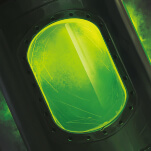Janette Turner Hospital: Due Preparations For The Plague

For the children of Air France Flight 64 in Janette Turner Hospital's novel Due Preparations For The Plague, it's always September 1987. Hijacked by Muslim terrorists for uncertain purposes, the flight left Paris for an explosive fate in the Middle East, pausing only to release its passengers' children—or most of them, anyway. Though Hospital flits about the chronology, she anchors Plague in the year 2000, as two survivors confront a shared history. While college student Samantha digs deeper into the past, Lowell, a divorced father of two, confronts it against his will when his father, a semi-retired CIA agent, meets a mysterious end, leaving behind a duffel bag full of secrets. What follows attempts to split the difference between John Le Carré and Don DeLillo, alternating icy suspense with a paranoia that seems taken from the atmosphere around its characters as much as from the story. Though she succeeds for long stretches in both modes, Hospital never quite weaves them together: She ratchets up the mystery, then abandons it for long, lyrical passages about the supporting characters' love story. It's easy for readers to lose their footing, but Plague offers rewards for those who stick with it, particularly in a climactic segment that puts the story on hold for a series of monologues that give the past a flesh and blood that no classified documents can. As a storyteller, Hospital relies too heavily on easily anticipated twists, but her command of mood compensates for the lapses. Though Plague was written mostly before Sept. 11, its mood finds resonance, as well as moments of human grace, in the shadows of global affairs that both the pawns and the kings who set them in motion find impossible to control.







































